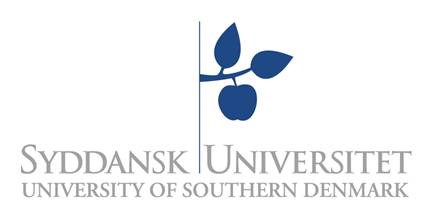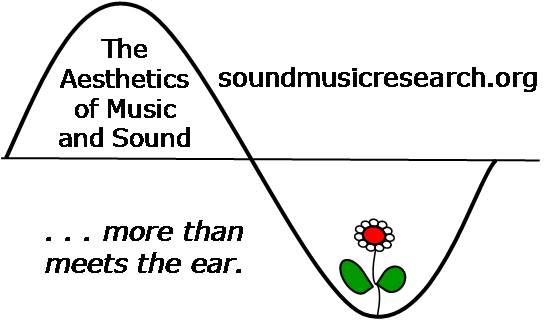|
Project Descriptions

Selective Bibliography
(For a more updated list which is specifically devoted to works written by program member, please see Representative Program-Relevant Publications by Research Group Members.)
Arnspang, J., Jensen, K., Murphy, D., Andersen, T. H. & Marantakis, G. (2001). ”Musical Informatics Laboratory at DIKU”. In: Proceedings of the International Computer Music Conference, Havana, Cuba, September 2001. San Francisco: International Computer Music Association.
Bendegem, Jean-Paul Van (1986). “Mathematical and Musical Patterns : A Case of Mutual Aid.” In: Apostel, L., Sabbe, H. & Vandamme, F., eds. Reason, Emotion and Music. Gent: C&C, pp. 163-182.
Brooks, A.L., & Hasselblad, S. (2004). “CAREHERE – Creating Aesthetically Resonant Environments for the Handicapped, Elderly and Rehabilitation: Sweden.” In: Sharkey, P., McCrindle, R. & Brown, D., eds. 5th International.Conference on Disability, Virtual Reality and Associated Technologies 20-22 September 2004 Oxford University, England. Reading: University of Reading Press, pp. 191-198.
Camurri, A, Volpe, G., De Poli, G., Leman, M.(2005). “Communicating expressiveness and affect in multimodal interactive systems”. IEEE Multimedia 12 (1), pp. 43-53.
Christensen-Dalsgaard J. & Walkowiak W. (1999). “In vitro and in vivo responses of saccular and caudal nucleus neurons in the grassfrog (Rana temporaria)” European Journal of Morphology 37: 145-149.
Christensen-Dalsgaard J (2004) Music and the origin of speeches. JMM: The Journal of Music and Meaning 2, section 2, pp. 1-16. http://www.musicandmeaning.net
Christensen-Dalsgaard J (2006) “Amphibian bioacoustics”. In: Handbook of Signal Processing, New York: Springer-Verlag, in press.
Ciger, Jan (2000). “An Ultrasonic Motion Tracker for VR Usage”. In: CESCG '97-'99 Selected Papers. Wien: Oesterreichische Computer Gesellschaft pp. 175-182.
Eaglestone, Barry, Carter JA & Brown MR (2001). “A comparison of folk music analysis using The Implication-Realisation Model and GTTM”. In: Proccedings of the Meeting of the Society for Music Perception and Cognition (SMPC-2001). Kingston, Ontario: QueensUniversity.
Emering, Luc & Herbelin, Bruno (2004). “Body Gesture Recognition and Action Response”. In: Magnenat-Thalmann, N. and Thalmann, D., eds. Handbook of Virtual Humans. John Wiley & Sons, Ltd., pp. 287-302.
Frimodt-Møller, Søren R. (2009). “Suggestions for Strategies in Modeling the Role of Reasoning in Ensemble Coordination”. In Kurzen, Lena and Velazquez-Quesada, Fernando R. (eds.) Logic for Dynamics of Information and Preferences. Seminar’s Yearbook 2008. Amsterdam: Institute for Logic, Language and Computation, Universiteit van Amsterdam, pp. 1-18.
Funge, John, Tu, Xiaoyuan & Terzopoulos, Demetri (1999). “Cognitive Modelling: Knowledge, Reasoning and Planning for Intelligent Characters.” In: SIGGRAPH 99. Proceedings. Los Angeles, CA.
Graugaard, Lars (2000/01). ”Interaktiv Computermusik er hverken Interaktiv eller Computermusik”, Dansk Musiktidsskrift, 75/6, 197-201.
Graugaard, Lars (2004). “Open and Closed Form in Interactive Music.” In: Computer Music Modeling and Retrieval, Second International Symposium (CMMR 2004), Esbjerg, Denmark. Revised Papers. Berlin & Heidelberg: Springer Verlag, pp. 149-157.
Grund, Cynthia M. (2009). "Pedagogy and Philosophy Viewed from the Piano Bench: IFPR's Cynthia M. Grund Interviews Incoming H.C. Andersen Guest Professor William Westney.” GymPæd 2.0. 2009; nr. 2, September 2009, pp. 9-10.
Grund, Cynthia M. (2007) “How Computer Music Modeling and Retrieval Interface with Music-And-Meaning Studies: Overview of Panelists' Suggestions for Discussion Topics.” Proceedings of the 2007 International Computer Music Conference, August 27-31, 2007. Copenhagen, Denmark. San Francisco and Copenhagen: The International Computer Music Association and Re:New-Digital Arts Forum, pp. 133-136.
Grund, Cynthia M. (2006b) “Interdisciplinarity and Computer Music Modeling and Information Retrieval: When Will the Humanities Get into the Act.” Lecture Notes in Computer Science; nr. 3902, Berlin & Heidelberg: Springer Verlag pp, 265-273.
Grund, Cynthia M. (2006a) “Mad, betydning ... og så opstår musikken ud af lyd.” Tankeføde - om mad, måltider og fødevarer i sammenhæng. Eds. Steen Brock; Anders Moe Rasmussen; Brian Benjamin. Aarhus : Philosophia, 2006, pp. 191-200.
Grund, Cynthia M. (2005b) “Music Information Retrieval, Memory and Culture: Some Philosophical Remarks.” Proceedings of the Sixth International Conference on Music Information Retrieval. Joshua D. Reiss and Geraint A. Wiggins, eds. London: Queen Mary, University of London, pp. 8-12. (For ISMIR2005 online proceedings, please see http://ismir2005.ismir.net/proceedings/index.html).
Grund, Cynthia M. (2005a) “Double Jeopardy: The Interdisciplinary Study of Music and Meaning.” Danish Yearbook of Musicology, Vol. 32, 2004, s. 9-14.
Grund, Cynthia M. (2001) “Music, Logic and Intentionality.” Proceedings of the Twelfth Meeting of the FWO Research Society on Foundations of Music Research: Music and Logic, Chapter 2, University of Ghent.
Grund, Cynthia M. (1997). Constitutive Counterfactuality: The Logic of Interpretation in Metaphor and Music. København: Askeladden.
Guillemain, Philippe, Helland, Robin T., Kronland-Martinet, Richard & Ystad, Sølvi (2004). “The Clarinet Timbre as an Attribute of Expressiveness”. In: Wiil, Uffe Kock, ed. Computer Music Modeling and Retrieval: Second International Symposium, CMMR 2004, Esbjerg, Denmark, May 26-29, 2004, Revised Papers. Springer, pp. 246-259.
Hannula, Mika, Suoranta, Juha & Vadén, Tere (2005). Artistic Research. Theories, Methods, Practices. University of Gothenburg.
Hatten, Robert S. (1994): Musical Meaning in Beethoven: Markedness, Correlation, and Interpretation (Advances in Semiotics, Thomas A. Sebeok, general editor). Bloomington and Indianapolis: Indiana University Press.
Hatten, Robert S. (1997). “Music and Tense”. In: Rauch, Irmengard & Carr, Gerald F., eds. Semiotics around the World: Synthesis in Diversity. Proceedings of the Fifth Congress of the International Association for Semiotic Studies, Berkeley. New York: Mouton de Gruyter, pp. 627-630.
Herbelin B. (2005) Virtual reality exposure therapy for social phobia. Thèse 3351, Faculté informatique et communications, Institut des systèmes informatiques et multimédias, EPFL, Switzerland.
Herbelin, Bruno & Ponder, Michal & Thalmann, Daniel (2005). “Building Exposure: Synergy of Interaction and Narration through Social Channels”. Presence, Teleoperators and Virtual Environments (vol 14, april).
Hildebrand, M., Eliens, A., Huang, Z. & Visser, C. (2003). “Interactive Agents Learning Their Environment”. In: Rist, T., Aylett, R., Ballin, D. & Rickel, J., eds. Intelligent Virtual Agents: 4th International Workshop. Lecture Notes in Computer Science.Berlin: Springer-Verlag, pp.13-17.
Jennings, Nicolas R. (2000). “On Agent-Based Software Engineering”. Artificial Intelligence 117, pp.277-296
Jensen, Kristoffer (2005). “Multiple scale music segmentation using rhythm, timbre and harmony.” EURASIP Journal on Applied Signal Processing, Special issue on Music Information Retrieval Based on Signal Processing.
Jensen, Kristoffer (2005). “Atomic Noise.” Organised Sound, 10(1), pp. 75-81.
Jensen, Kristoffer (2004). "Irregularities, Noise and Random Fluctuations in Musical Sounds.” The Journal of Music and Meaning 2, section 2. http://www.musicandmeaning.net.
Krausz, Michael (2000). Limits of Rightness. Rowman and Littlefield Publishers.
Krausz, Michael (1993). Rightness and Reasons: Interpretation in Cultural Practices. Ithaca: CornellUniversity Press.
Leman, M. (2002). “Expressing coherence of musical perception in formal logic.” In: Assayah, G., Feichtinger, H., Rodrigues, J., eds. Mathematics and Music- A Diderot Mathematical Forum. Berlin: Springer-Verlag, 185-198.
Leman, M. (1995). Music and Schema Theory—Cognitive Foundations of Systematic Musicology. (Springer Series in Information Science, no. 31). Berlin: Springer-Verlag.
Manganas, A., Tsiknakis, M., Leisch, E., Ponder, M., Molet, T., Herbelin, B., Magnenat-Thalmann, N., Thalmann, D. (2004). “JUST in Time Health Emergency Interventions: An innovative approach to training the citizen for emergency situations using Virtual Reality Techniques and Advanced IT Tools (The VR Tool).” The Journal on Information Technology in Healthcare, 2(6): 399–412
Marsden, Alan (2004). “Extending a Network-of-Elaborations Representation to Polyphonic Music: Schenker and Species Counterpoint.” In: Proceedings of First Sound and Music Computing Conference, IRCAM, Paris, pp. 57–63
Marsden, Alan (1999). “Computers and the concept of tonality.” In: Coppock, J.T., ed. Information Technology and Scholarly Disciplines. Oxford:OxfordUniversity Press (for the BritishAcademy), pp. 33-52
Petersson, E. & Brooks, A. (2005). “Virtual and Physical Toys – Open-ended Features towards Non-formal Learning.” International Workshop on Virtual Reality (IWVR), Catalina, USA, pp. 47-60.
Petersson, E. & Brooks, A. (2006). “Non-formal Therapy and Learning Potentials through Human Gesture Synchronized to Robotic Gesture [HRI] within a Virtual Environment [VE].” In: 3rdCambridge Workshop on Universal Access and Assistive Technology (CWUAAT), Cambridge, UK, (in press).
Rickel, Jeff & Johnson W. Lewis (1999). “Virtual Humans for Team Training in Virtual Reality.” In: Lajoie, Susanne P. & Vivet, Martial, eds. Artificial Intelligence in Education. Amsterdam: IOS Press, pp. 578-585
Rickel, Jeff & Johnson, W. Lewis (1997). “Integrating Pedagogical Capabilities in a Virtual Environment Agent.” In: Proceedings of the First International Conference on Autonomous Agents. ACM Press.
Sauerberg, Lars Ole (2001). Intercultural Voices in Contemporary British Literature: The Implosion of Empire. London and New York: Palgrave.
Sauerberg, Lars Ole (1992). Fact into Fiction: Documentary Realism in the Contemporary Novel. London: Macmillan; New York: St. Martin’s Press.
Skovenborg, E. & Nielsen, S.H. (2004). “Evaluation of Different Loudness Models with Music and SpeechMaterial”. Submitted to: Journal of the Audio Engineering Society.
Skovenborg, E. and Arnspang, J. (2003). “Extraction of Structural Patterns in Popular Melodies.” In: Proceedings of the Computer Music Modeling and Retrieval Conference Montpellier, France, May 26-27, 2003. Berlin: Springer-Verlag.
Søegaard, Fredrik (2010). “Soundmapping the Genes” in JMM 8: The Journal of Music and Meaning. http://www.musicandmeaning.net.
Søegaard, Fredrik (2010). Soundmapping the Genes (SMTG), Søegaard Ensemble. CD release, February 2010. Leo Records, CD LR 560.
Tarasti, Eero (2002). Signs of Music: A Guide to Musical Semiotics. Berlin: Mouton de Gruyter.
Tarasti, Eero (1994). A Theory of Musical Semiotics. Bloomington: IndianaUniversity Press.
Trevarthen, Colwyn (2002). “Origins of musical identity: evidence from infancy for musical social awareness”. In: MacDonald, R., David J. Hargreaves, D. J. and Dorothy Miell, D., eds. Musical Identities. Oxford:OxfordUniversity Press, pp. 21-38.
Vadén, Tere (2002). “Openness, Criticality and Language. Observations on the methodology of practice-based experimental research.” In: Kiljunen, S. & Hannula, M., eds. Artistic research. Helsinki: Academy of Fine Arts.
Vadén, Tere & Hannula, Mika (2003). Rock the Boat. Localised Ethics, the Situated Self and Particularism in Contemporary Art. Köln: Salon Verlag.
Westney, William (2003 hardcover/2006 paperback). The Perfect Wrong Note. Pompton Plains, New Jersey: Amadeus Press.
Ystad, Sølvi & Voinier, Th. (2001). “A Virtually Real Flute.” International Computer Music Journal (MIT Press), vol. 25, 13-25.

(Click here to return to Projects page.)
|
|

Institute for the Study of Culture
Institut for Kulturvidenskaber (IKV)
Research Director for
The Aesthetics of
Music and Sound
and
Editor and Webmaster for
www.soundmusicresearch.org:
Cynthia M. Grund
cmgrund@sdu.dk

Projects
(For descriptions, please click on the tabs at the top of the page.)
1.Understanding Music through Modern Technology
a) Recognizing Music
b) Recognition of Expressive Styles in Music Performance
c) Autonomous Agents – An Accompanist in VR
d) The Composition and Its Role in the Ensemble
2. Intermediality
a) Intermediality
b) Lyric and Meaning in Music
c) Towards an Aesthetic Theory of Correlativity
d) Are Treatments of the Metaphysics of Music in Medieval Literature Relevant for Current Theories of Musical Meaning and Significance?
3. Learning through Music
a) Music Communication
b) Children's Knowledge Creation with Intelligent Agents in Music Education - Understanding for Optimizing Motivations
c) Adaptable Interfaces & Augmented Avatar - Introducing Tools for the Disabled and Musicians in VR
d) Community Singing and/or Ideology
e) Creating Creativity
f) Understanding Musical Creativity and Aesthetics in a Digital-Based Youth Cultural Context
g) The Sound of Movement - the Sound of Learning
4. Practice-based Research
a) Analysis and Implementation of Practice-Based Research
b) Relationship of Gesture to Communicative Authenticity in Performance
c) Musical Implications of the Work of Selected Philosophers
d) Employing the Methods of Discourse Narrative to Support Interpretive Choices Faced by the Practicing Musician
e) Soundmapping the Genes
f) A Program of Practice-based Research Designed to Examine Listener Reaction to Olivier Messiaens Vingt Regards sur l'Enfant Jesus
g) The Interrelationship of Notation and Performance
h) Technological and Aesthetic Investigations of the Physical Movements of Pianists
5. Selective Bibliography

| |